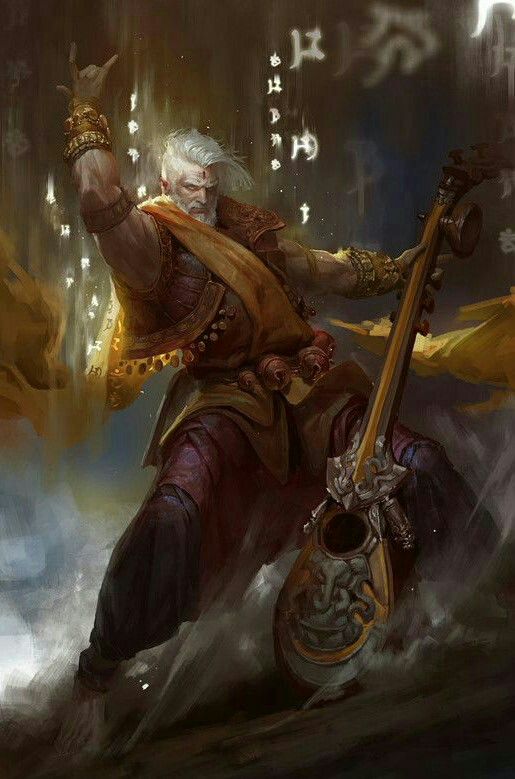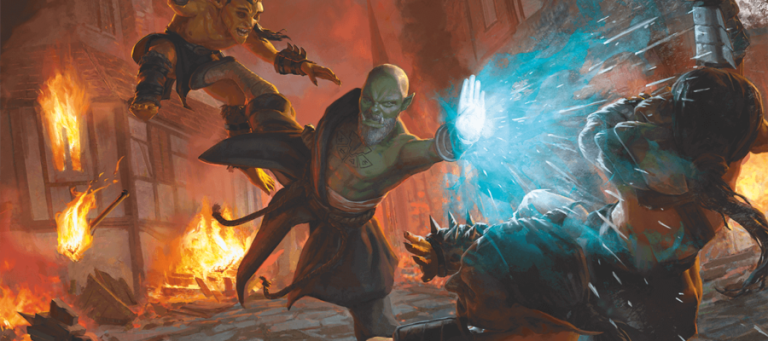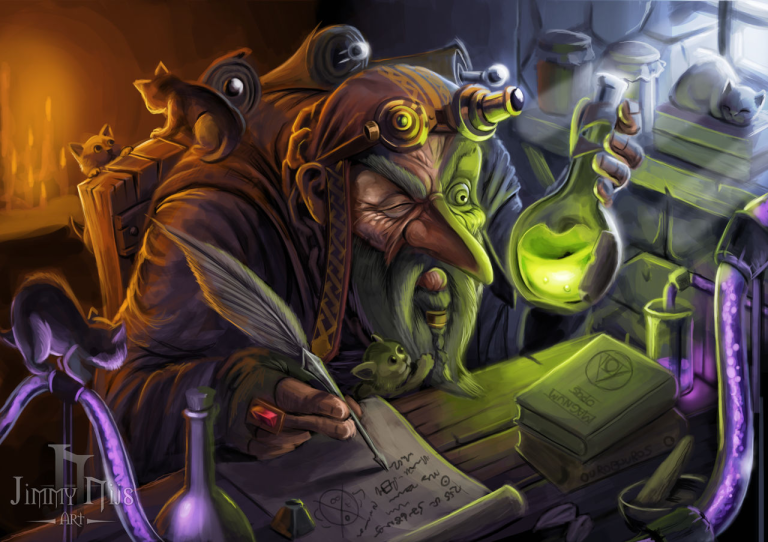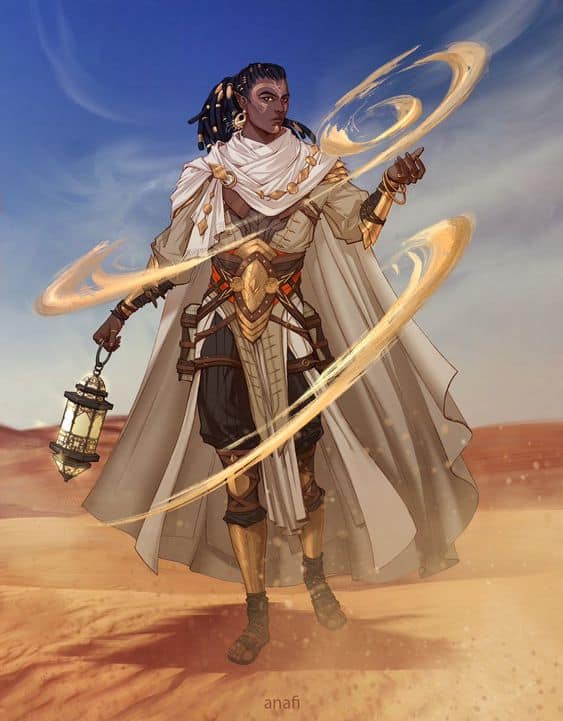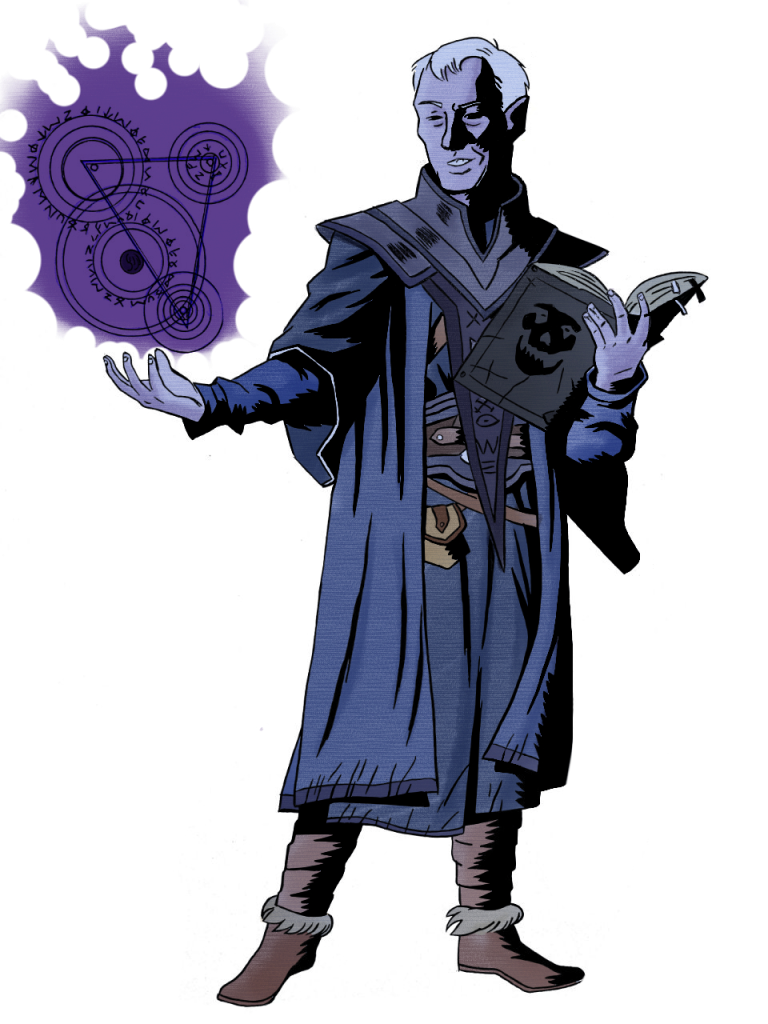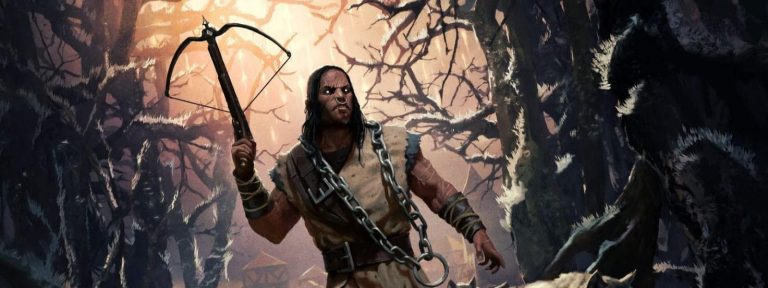D&D 5e: Bladesinger Wizard Guide

D&D 5e: Bladesinger Wizard Guide
Role in the Party
The Bladesinger is an immensely popular and iconic subclass of the wizard. Restricted to elves only before Tasha’s, it has become available to wizards of any race since the publication of that book. This guide will assume you’re using the Tasha’s version of the subclass.
“Gish” is a commonly used term for weapon users that can also cast arcane spells: the Bladesinger is one of the most famous gish subclasses for 5e, and it’s sort of the opposite of the Eldritch Knight: instead of being mostly a weapon user with a little magic, you’re mostly a magic user with a little weapon capability, but you’re arguably more powerful since your subclass comes with an array of defensive benefits too, and your weapon capability is pretty solid.
This powerful and fun subclass provides both offensive and defensive boosts to your wizard, and you’re the only wizard who can do anything significant with weapon use. Although some wizard subclasses like Divination and Chronurgy are arguably stronger, the Bladesinger is still a top tier option.
Epic
Good
Meh
Bad
The Bladesinger Wizard subclass is found in both Sword Coast Adventurer’s Guide AND Tasha’s Cauldron of Everything. Click here to pick up your own copy of Tasha’s Cauldron of Everything OR click here to pick up a copy of Sword Coast Adventurer’s Guide!
Bladesinger Wizard Features
Training in War and Song
When you adopt this tradition at 2nd level, you gain proficiency with light armor, and you gain proficiency with one type of one-handed melee weapon of your choice.
You also gain proficiency in the Performance skill if you don’t already have it.
A solid feature that gives you proficiency in light armor, a weapon that’s probably a rapier, and a skill. This lets you use weapons.
Bladesong
Starting at 2nd level, you can invoke an elven magic called the Bladesong, provided that you aren’t wearing medium or heavy armor or using a shield. It graces you with supernatural speed, agility, and focus.
You can use a bonus action to start the Bladesong, which lasts for 1 minute. It ends early if you are incapacitated, if you don medium or heavy armor or a shield, or if you use two hands to make an attack with a weapon. You can also dismiss the Bladesong at any time (no action required).
While your Bladesong is active, you gain the following benefits:
You gain a bonus to your AC equal to your Intelligence modifier (minimum of +1)
Your walking speed increases by 10 feet.
You have advantage on Dexterity (Acrobatics) checks.
You gain a bonus to any Constitution saving throw you make to maintain your concentration on a spell. The bonus equals your Intelligence modifier (minimum of +1).
You can use this feature a number of times equal to your proficiency bonus, and you regain all expended uses of it when you finish a long rest.
An amazing feature that dramatically increases your armor class and concentration saves, and then it gives you extra speed and advantage on Dexterity (Acrobatics) checks as an added bonus. If you combine light armor with a 16 dexterity and a 20 intelligence and then use this feature, your armor class goes from 15 to 20, then you can use Shield to increase it to 25. This is fantastic. And if you have War Caster or proficiency in Constitution saving throws, you will almost never fail a concentration save while this is active.
Oddly enough, this doesn’t boost your weapon damage at all; you don’t have to start stabbing and shooting after activating this, you can just keep casting spells as normal. A high armor class is solid no matter what you’re doing.
Remember that you can’t use this with any armor except light armor, and your dexterity probably shouldn’t be your highest ability score, so your armor class will merely be great instead of unbeatable.
Extra Attack
Starting at 6th level, you can attack twice, instead of once, whenever you take the Attack action on your turn. Moreover, you can cast one of your cantrips in place of one of those attacks.
This isn’t just Extra Attack: it’s *super* extra attack. If you have proficiency in these weapons, you could use this with a longbow (when not bladesinging since it takes two hands) or a hand crossbow and a Firebolt cantrip, or you can use it with a rapier and Booming Blade for more damage. Both of these will likely be a straight damage boost for you since your cantrips have both scaled up. You also don’t have to be bladesinging to benefit from this.
Remember that you might not deal as much damage as the fighter or barbarian since you likely aren’t taking feats to dramatically increase your damage and probably don’t have a fighting style. You can use the Shadow Blade spell to increase your damage and could do two weapon fighting with a shortsword with it if you want. Some dungeon masters may not let you use Booming Blade with a Shadow Blade, so just make one of your action attacks be with the normal shortsword if this is the case.
Tenser’s Transformation is a bad spell that’s sometimes recommended as a good option for Bladesingers, but it’s actually even worse for you than it is for a normal wizard; you already have Extra Attack and can’t use Booming Blade or Shadow Blade with it. Ignore it.
Song of Defense
Beginning at 10th level, you can direct your magic to absorb damage while your Bladesong is active. When you take damage, you can use your reaction to expend one spell slot and reduce that damage to you by an amount equal to five times the spell slot’s level.
This is expensive, and defensive spells like Mirror Image and Shield are a thing already. You’ll use this sometimes, but not that often.
Song of Victory
Starting at 14th level, you can add your Intelligence modifier (minimum of +1) to the damage of your melee weapon attacks while your Bladesong is active.
This does a decent job at keeping your melee weapon damage somewhat relevant at high levels, but remember that you’re primarily a wizard. Even if you can deal 4d8+20 damage with Booming Blade and a rapier, or 7d8+20 if the target moves, remember that your action might be better spent casting a Transmute Rock or Wall of Force or Fireball or even a humble Web. It’s easy to build a fighter who can do much more damage than you can at this level. It also only works on melee attacks, and you have enough Bladesong uses to last through even a brutal adventuring day, so ranged weapon usage might be a bad idea.
Lastly, remember that this works while you’re affected by the Shapechange spell: in fact, most of your features do. Adding +5 to three attacks is fine, but what if you turned into a marilith who can add that +5 to seven powerful attacks instead of two okay ones and one powerful one? Stellar.
Strengths
No other wizard and almost no other full caster has a reliable non-spell option that’s as good as your weapon use, and you have extra defenses from your subclass, mitigating the need to multiclass for armor proficiency or constitution save proficiency. At a table where everyone’s optimizing their character, your normal Bladesinger might achieve high level spells before anyone else does. In general, you’ll have good spells and excellent staying power for long adventuring days since your weapon use will usually be superior to a normal cantrip.
Weaknesses
You are more vulnerable to bad luck than a typical weapon user. If you’re hit by two crits in a row, your d6 hit die will cause you to suffer. You also need a higher dexterity than the average wizard, so your wisdom and/or constitution might suffer. Also, it’s easy to fall into the trap of trying to focus on and enhance your weapon use; you are a wizard, and sometimes you should resist the urge to stab people and just cast normal spells instead.
Best Race Options
Even though the Bladesinger isn’t restricted to elves anymore, the High Elf is still a thematic and powerful choice. You don’t have to move the +2 dexterity/+1 intelligence ability scores, but you likely want a higher intelligence than dexterity. Switching them around could be ideal. The Elf Weapon Training feature gives you shortsword, shortbow, and longbow proficiency, giving you multiple melee and ranged options. Remember that the bows shouldn’t be used while bladesinging, since they will immediately end it, but they’re a solid option for when your Bladesong isn’t up.
Any of the Fizban’s Treasury of Dragons Dragonborn can replace an attack with a breath weapon. When you hit level 6, you can suddenly replace the non-cantrip attack with a breath weapon and then use whatever cantrip you want for your second attack; there are some unusual builds that can take advantage of this.
The Monsters of the Multiverse Bugbear comes with a multitude of solid benefits. Surprise Attack is useful if you win initiative since you can deal 2d6 to 6d6 extra damage depending on your level and whether or not you’re two-weapon fighting. Long-Limbed is helpful for melee weapon users, and the other features aren’t bad either.
If you wanted to dump dexterity, Tortle is your best option. The 17 armor class combines with Bladesong, so you can get it up to 22 and then 27 with the Shield spell, which is mostly unhittable. If you want to make weapon attacks, you will need to multiclass.
Choosing the Right Skills
You’re a wizard, so you’ll be relied upon for Arcana, and possibly also Nature, History, Religion, and Investigation. Their usefulness will vary depending on the campaign, but they’re all solid picks.
Perception proficiency is excellent for any character. You especially do not want to be surprised, since being attacked when your Bladesong isn’t up is very bad.
Your dexterity is probably higher than the average wizard, so you’re unusually well suited for dexterity skills. Strongly consider Acrobatics, Stealth, and if you think you’ll be in a campaign where you’ll get to use it often, Sleight of Hand.
Fitting Feats
War Caster will let you use two weapon fighting and cast spells, and you may want to choose two weapon fighting on some melee Bladesinger builds. It’s much better than Resilient (Constitution) on these kinds of characters.
I do not recommend taking Sharpshooter or Crossbow Expert; you can’t use these as well as other characters, and although you can technically use a hand crossbow while bladesinging, the benefit probably isn’t enough to justify giving up a full feat. If you want to take a feat that boosts weapon use, take Elven Accuracy instead if you’re an elf; at least that will let you increase an odd ability score, so you can increase your intelligence. A higher chance to hit and crit synergizes well with your powerful Booming Blade anyway.
Alert will help you win initiative so that you can get your Bladesong up before anything bad happens to you. You want to be shot when you have 20 AC, not 15 AC. It’s also a solid spell for any wizard since going first will let you unleash a crippling crowd control effect before enemies can do anything.
Optimal Backgrounds
Cloistered Scholar is a solid background for any wizard, especially one handling ancient and rare elven magic.
A non-elf might consider the Anthropologist background: perhaps while learning more about elven culture, they went down the Bladesong rabbit hole and eventually mastered the technique.
For Strixhaven backgrounds, Prismari Student is the most appropriate: the Prismari school is an art school centering on magical performances that often involve blasting spells. Channeling your artistic creativity into a Bladesong for a deadly and beautiful performance seems appropriate. Also, you gain a free Strixhaven Initiate feat.
Multiclassing Options
A warning about multiclassing: you can multiclass a Bladesinger into several classes and grab a ton of features to boost weapon use, but you’ll be giving up high level spells if you multiclass too much. A straight classed Bladesinger may be the optimal choice depending on what kind of character you want to make. Still, there are some fine options:
There’s an unusual multiclass you can do with the seemingly inescapable Hexblade Warlock: this video (https://www.youtube.com/watch?v=geWwa-6t97E) describes the build more, but you prioritize Charisma as a Fizban’s Metallic Dragonborn and take Hexblade, Arcane Archer Fighter, and Bladesinger, and this lets you do about 80 different powerful things with your attack action, some of which are limited and some of which are non-limited I don’t know if this is stronger than a straight classed Bladesinger, and it takes some time to fully come online, but it is an unusual and seemingly fun build.
Bizarre multiclasses aside, One level of Fighter gives you a fighting style, and starting as a fighter gives you constitution saving throw proficiency. This one level dip will make your concentration nearly unbreakable while you’re in Bladesong and boost your weapon damage. If you wanted to make a hand crossbow Bladesinger, Archery is mandatory. Two levels for Action Surge or three for a subclass like Battle Master or Rune Knight is decent but giving up spellcasting progression hurts.
One level of Artificer at level 1 gives you constitution saving throw proficiency and doesn’t sacrifice spell slot progression like a level of Fighter does. Three levels of Battle Smith Artificer will let you attack with intelligence instead of dexterity. This might not necessarily be worth it due to the downsides of multiclassing out of wizard for several levels. Remember to go Tortle if you wanted to do this so that your AC is still solid.
Would I recommend playing a Bladesinger Wizard?
I would recommend it, and I would recommend a straight-classed Bladesinger more than a multiclassed one. You can be an immensely powerful wizard, you can avoid having to take multiclass dips to boost your defense, and you can be decent with weapons. The Bladesinger is the ultimate subclass for anyone who wants to be a gish-style character, especially one that doesn’t sacrifice powerful spell casting. It’s even a great subclass if you don’t want to use weapons very often, just because Bladesong is so good. You will not regret being a Bladesinger.



